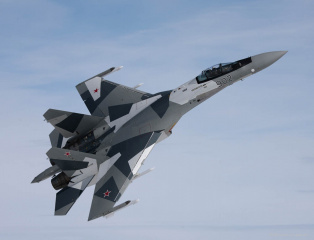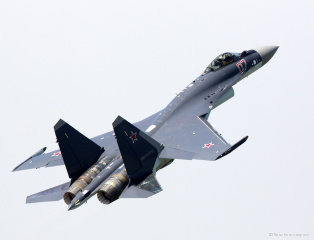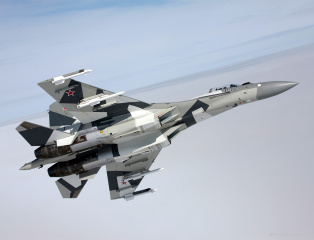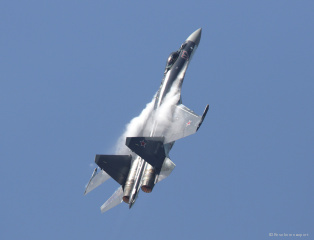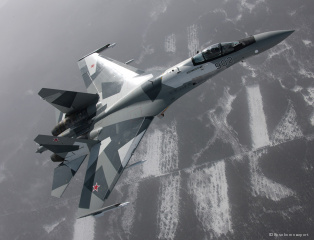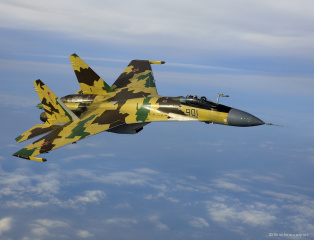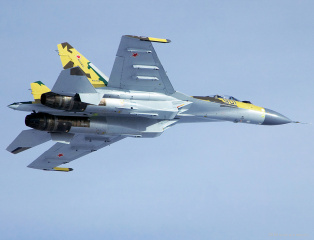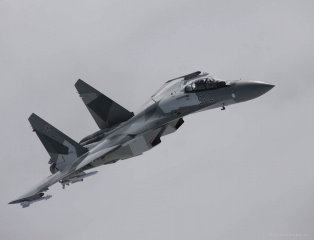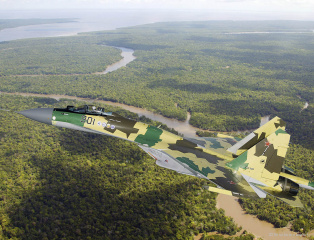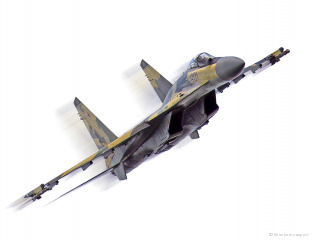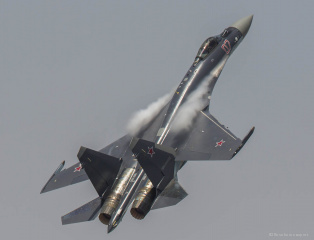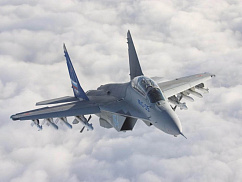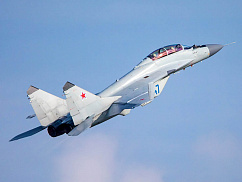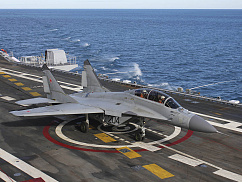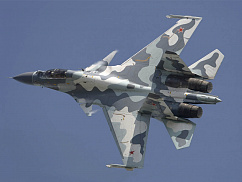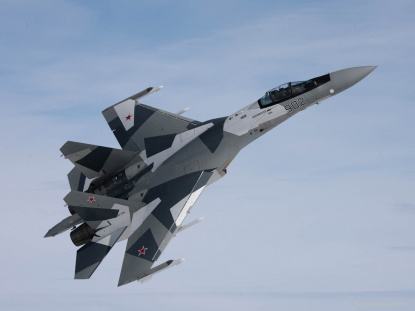
en formato pdf
Mission
The Su-35 multirole supermaneuverable fighter is designed to gain air superiority and destroy air, ground and surface targets at considerable distances from home bases, in an intense enemy ECM and counter-fire environment, in any weather, day or night.
The Su-35 is capable of effectively accomplishing the following missions: protection the country's airspace through long patrols at considerable distances from the home base; repelling enemy air attacks and protection of installations from air attacks; striking against air, ground, air defense and sea targets, vital government and military administration, logistics and communications facilities, as well as battlefield air interdiction and aerial reconnaissance.
Equipment
The Su-35’s avionics suite is based on open architecture using multiplex data exchange links and includes: an information management system, sighting/navigation/control radar system, an optical locating station, as well as communications, monitoring, recording and EW equipment. The aircraft’s radar can detect air targets with RCS = 3 m² at a distance of 350 km.
Its flight controls are highly ergonomic while indication on widescreen color displays coupled with a helmet-mounted targeting system provides convenient perception of information, which increases the pilot effectiveness in combat.
Armament
The armament system includes air-to-air missiles (RVV-AE, RVV-SD, RVV-MD and R-73E), air-to-ground missiles (Kh-31PD, Kh-31A, Kh-29TE(L), Kh-59MK, KAB-500Kr, KAB-500S-E, KAB-500-OD, KAB-1500Kr-type guided bombs, aviation bombs (caliber 100, 250, 500 kg), unguided rockets (S-8, S-13) as well as an internal 30mm gun. Effective engagement of air, ground and surface targets is achieved through the use of modern radar, optical locating station and helmet targeting system, high target approach accuracy, employment of guided weapons with active and passive radar, laser and TV guidance systems.
Main benefits
- round-the-clock and all-weather capability;
- versatility, high flight safety and survivability;
- supermaneuverability;
- independent stationing and operation capability;
- reduced radar signature;
- capability of controlling a group of aircraft outside the radar field;
- extended combat air patrols (up to 10 hours with one in-flight refueling);
- capability to effectively engage air, ground and sea targets at large distances from home bases using a wide range of airborne weapons.
en formato pdf


